Rajasthan Textiles
Tools of Makng Ajrakh Printing
-Blocks |
||
These are hand carved from the wood of Acacia Arabica trees. Several different blocks are used to give the characteristic repeated patterning. Making the blocks is a considerable challenge since the pattern has to synchronize perfectly with the whole of the Ajrakh as well as cover various areas against dye. Block makers (orporegars) use the simplest of tools, and carve each block in pairs that can register an exact inverted image on the other side. |
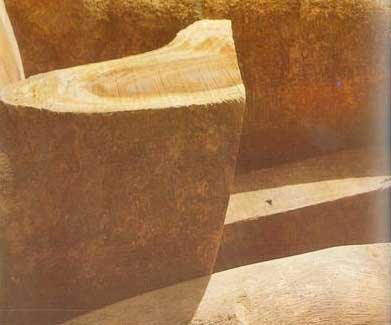 |
|
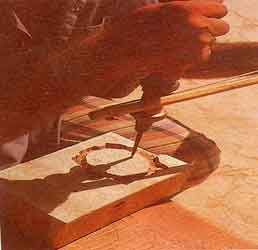 |
From the seasoned wood, a block is cut to the required size and sanded on a stone to get a leveled plane surface which is then checked out by the edge of a steel ruler.The surface of the block is dipped in water and then n wari (dry, powdered clay) and rubbed against rohi (granite). With the friction, a whitish layer is formed on the surface of the block. A base line is drawn with the help of a steel ruler; a compass is then used to verify right angles so that a square is constructed accurately. |
|
Diagonals are marked and the square is quartered and then further sixteenth. The pattern drawn on the paper is transferred by etching fine lines on the surface of the block.These blocks are now made in Barmer itself but the carvers are not native. Most of them are from Farukabad, Uttar Pradesh. They have set up their homes in Barmer (near this village) for the sake of their profession. |
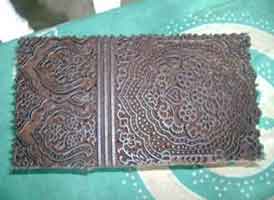 |
|
| -Colours | ||
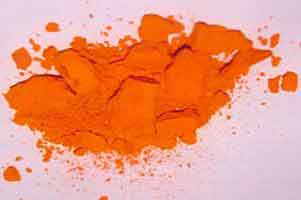 |
The traditional craft of ajrakh uses only natural colors (vegetable dyes) for its making. The usual colors of the craft are red, yellow, blue and black. However green and some other secondary colors are also used now-a-days. They are generally made by mixing the usual colors. |
|
The colors being made from all natural materials are harmless to the workers in all ways. Whereas the chemical ajrakh printing which has come up in the recent past uses chemical dyes which are very harmful to the health of the workers. |
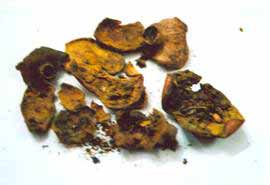 |
|
| -The Fabric | ||
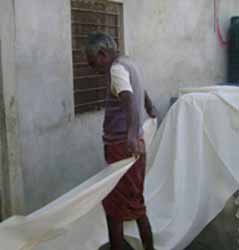 |
|
|
| -Other Tools | ||
A wooden table is used by the workers to place the fabric for printing. it has around 40-50 layers of fabric on it so that it becomes easy for the main fabric to absorb color when it is printed. Babul wood is used for the making of the table as it cheap. One table costs around rs. 300-400. |
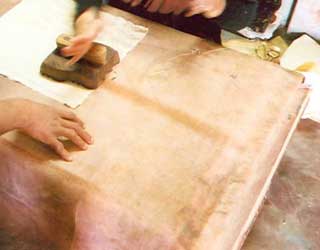 |
|
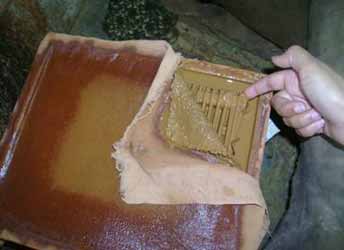 |
A wooden jaali is used in a wooden container which has the resist paste in it. It helps the thick layer of fabric to float over the paste so that the block picks up appropriate amount of color. | |
| A needle is used to carve blocks. Thickness of the tip of the needle depends on the amount of intricacy required in the design. | 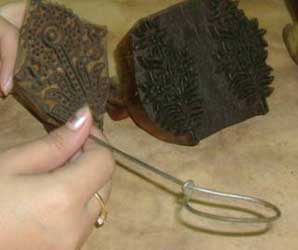 |